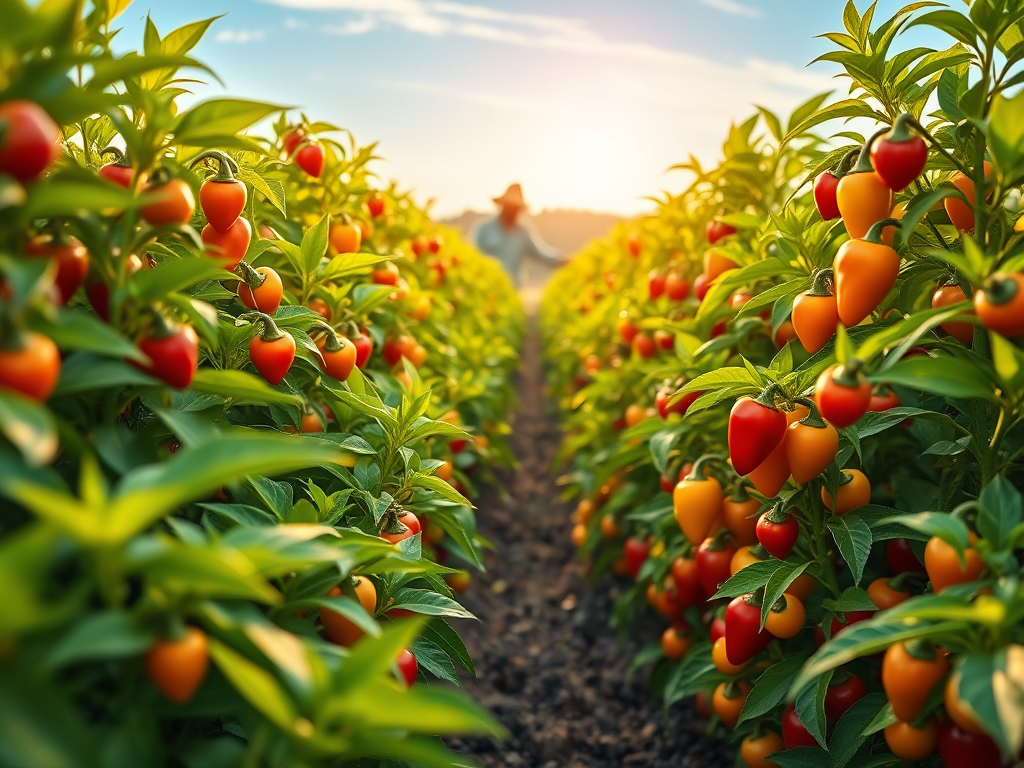Habanero peppers, known for their fiery heat and vibrant color, are among the most sought-after chili varieties in Nigeria and across Africa. They are not only a staple in spicy dishes but also a profitable crop for agribusiness enthusiasts. Whether you are a beginner or an experienced farmer, this guide provides actionable habanero pepper farming tips, harvest strategies, market insights, and export opportunities to ensure you maximize your yield and profit.
Habanero Pepper Farming Tips: Setting the Foundation for Success
Growing habanero peppers can be a rewarding venture if you follow these proven tips:
- Select Quality Seeds: Always start with high-quality, disease-resistant seeds. Your success begins with the genetic potential of the seeds you plant.
- Prepare the Soil: Habaneros thrive in well-drained, nutrient-rich soil with a pH of 5.5 to 7. Add organic matter to boost fertility.
- Adequate Spacing: Overcrowding reduces yield and increases the risk of pests and diseases. Maintain a spacing of 60 cm between plants and 90 cm between rows.
- Water Wisely: While habaneros need regular watering, overwatering can lead to root rot. Focus on consistent moisture, especially during flowering and fruiting.
- Control Pests and Diseases: Common threats include aphids, whiteflies, and fungal infections. Use organic pesticides and practice crop rotation to minimize risks.
Pro Tip: Start your seeds in a nursery and transplant healthy seedlings after 6-8 weeks for better results.
Habanero Pepper Harvest Tips: Maximizing Quality and Yield
Harvesting habanero peppers at the right time is key to getting the best flavor, heat, and market value. Here’s how to do it:
- Timing is Everything: Habaneros typically mature in 75-100 days after transplanting. Wait until they turn their characteristic red, orange, or yellow color.
- Use the Right Tools: Avoid damaging the plant by using sharp pruning shears or scissors to harvest the peppers.
- Regular Picking: Harvesting frequently encourages plants to produce more fruit. Check your plants every 2-3 days during peak season.
- Post-Harvest Handling: Sort peppers by size and color, and store them in a cool, dry place to maintain freshness.
Pro Tip: Harvest in the morning when temperatures are cooler to minimize stress on the plants and preserve the peppers’ quality.
Understanding Habanero Pepper Heat Level
Habanero peppers are not for the faint-hearted, with heat levels ranging from 100,000 to 350,000 Scoville Heat Units (SHU). To put this into perspective, they are 10 times hotter than your regular chili pepper.
Factors that influence their heat level include:
- Genetics: Different varieties produce varying levels of capsaicin, the compound responsible for the heat.
- Growing Conditions: Stress factors like limited water and high temperatures can increase the heat level.
- Ripeness: Fully ripened habaneros tend to be hotter than unripe ones.
Pro Tip: For customers who can’t handle the heat, ways to reduce the spice by separating the seeds from the membranes before use.
Selling Habanero Peppers in Nigeria
The demand for habanero peppers in Nigeria is enormous, driven by their popularity in local dishes and commercial food processing. To succeed in selling habanero peppers in Nigeria:
- Target Local Markets: Major markets in Lagos, Abuja, and Port Harcourt are always on the lookout for fresh peppers.
- Partner with Restaurants: Many restaurants prefer to source their peppers directly from farmers for better pricing and quality.
- Explore Value Addition: Process your harvest into products like pepper paste, dried peppers, or chili powder to attract premium prices.
- Leverage Online Platforms: Social media platforms and e-commerce websites for connecting with buyers.
Pro Tip: Packaging matters! Invest in good packaging to make your produce more attractive to customers.
Exporting Habanero Peppers from Africa
The global demand for habanero peppers is rising, particularly in Europe, the Middle East, and Asia. Nigeria and other African countries are well-positioned to meet this demand. Here’s how to tap into the export market:
- Meet International Standards: Ensure your peppers meet export requirements for size, color, and pesticide residue levels.
- Partner with Export Agencies: Agencies like NEPC (Nigerian Export Promotion Council) can guide you on regulations and market access.
- Invest in Cold Storage: Habaneros need proper storage to remain fresh during shipping. Cold storage facilities are a must for long-haul exports.
- Market Research: Identify countries with high demand for habaneros and build relationships with buyers or distributors.
Pro Tip: Start small and scale up as you gain experience in navigating the export landscape.
Conclusion
Habanero pepper farming is more than just a spicy adventure; it’s a pathway to profitability and sustainability for agripreneurs in Nigeria and across Africa. By implementing these habanero pepper farming tips, harvesting effectively, understanding the habanero pepper heat level, exploring local sales strategies, and venturing into export markets, you can turn your farm into a thriving business. The journey may be hot, but the rewards are hotter. Start planting today, and who knows? Your fiery little peppers might just open up global opportunities for you.
Share your experiences or questions in the comments below, and let’s keep the conversation growing!


